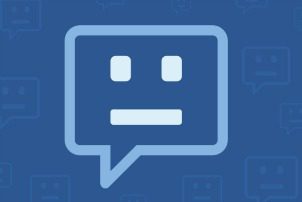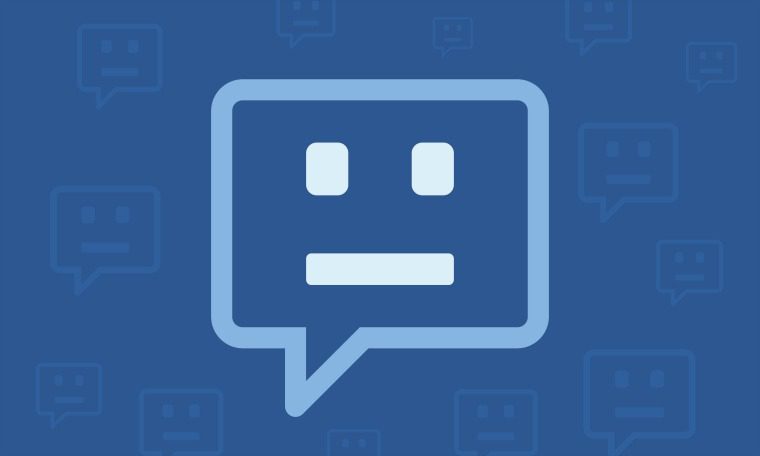 According to Niko Bonatsos, managing director at General Catalyst, 90 percent of user time on mobile devices is spent on email and messaging platforms. In the gold-rush proliferation of the app-based economy, one would think mobile consumers spend most of their screen time on games and other supplemental apps. The reality is app usage isn’t decreasing — people are just using the ones for email and messaging a whole lot more.
According to Niko Bonatsos, managing director at General Catalyst, 90 percent of user time on mobile devices is spent on email and messaging platforms. In the gold-rush proliferation of the app-based economy, one would think mobile consumers spend most of their screen time on games and other supplemental apps. The reality is app usage isn’t decreasing — people are just using the ones for email and messaging a whole lot more.
This evolution is creating a new app category and a new way of using existing apps. Until now, the most popular app designs were based on a visual UX. But what if this paradigm shifted to incorporate a conversational UX? Over the past few years, the conversational UX used by chatbots and virtual assistants has become fairly ubiquitous; most people are familiar with Siri, Cortana and Alexa. But there are also more specialized chatbots, like Poncho the Weather Cat, which is designed to answer weather-related questions.
 Chatbots can operate according to a set of predefined rules or, using machine learning, work based on various degrees of artificial intelligence. They can be accessed through chat tools — such as Facebook Messenger — or other types of messaging apps. Basically, a chatbot interacts with the user in the same way a live person would — through conversation. Theoretically, the bot gets smarter as it interacts with more people and learns new things, which opens up some fascinating instructional avenues to explore.
Chatbots can operate according to a set of predefined rules or, using machine learning, work based on various degrees of artificial intelligence. They can be accessed through chat tools — such as Facebook Messenger — or other types of messaging apps. Basically, a chatbot interacts with the user in the same way a live person would — through conversation. Theoretically, the bot gets smarter as it interacts with more people and learns new things, which opens up some fascinating instructional avenues to explore.
The learning applications for chatbot technology on desktop or mobile learning may be in the early stages, but the possibilities could be transformative. Having an available, accessible subject-matter expert dramatically changes several aspects of what experts in learning and performance do, such as:
- Coaching: Coaching can be an invaluable part of the learning ecosystem, but it’s also dependent on SME availability. Several studies of millennial learners suggest coaching is one of the most effective modalities among that demographic. When coaching strategies pull valuable expertise away from critical issues, the coaching often doesn’t get off the ground. By implementing a virtual coach to serve up a knowledge base while learning how to be a better coach over time, it’s possible to have a sustainable, virtual coaching model. The organization’s face of the collective expertise could be a chatbot.
- Reference: This question-and-answer utility may be one of the most obvious applications for chatbots, but it’s also one with significant potential. Take psychologist Betsy Sparrow’s discussion about Google’s Effects on Memory. She talks about teaching people how to find the answers they need in context rather than memory-dependent information dumps. A reference chatbot could be introduced early in a training course for learners to use as they work through simulated challenges. This would help familiarize them with how to use the chatbot for reference on the job, in the conversational format they’ve been using to find information for years.
- Performance support: Chatbots can be used for reinforcement — a smarter version of reference — by pushing out information at scheduled times or in response to certain triggers. The bot’s logic can recognize certain kinds of questions and provide feedback for continuous development, additional learning and just-in-time troubleshooting.
- Drill and practice: The conversational UX is a great tool for practice and assessment. It could be gamified so the bot and learner compete with each other, serve up a flash-card strategy to fill downtime or prepare learners for live interactions.
- Simulations: The more robust version of the drill-and-practice approach would be a simulation bot that plays the role of a customer, vendor or difficult employee. Consider the value of a call-center employee who can practice interacting with a bot to achieve basic competency prior to getting on the phone with customers.
- Cohorts and social learning: One aspect of chatbots that has yet to be explored is their use as moderators and champions in forums and other social learning arenas. One of the difficulties with social features is that forums and discussions often require moderation and expert participation. As chatbots get smarter, they can handle both roles. In social learning environments, the bot’s interaction doesn’t need to be limited to individual communications, but it also can communicate with a larger group.
- Personalization: This may be more of a characteristic of all chatbot applications rather than an application in its own right, but consider the value of chat as an interface to an entire learning and performance ecosystem. Could a chatbot take the place of a learning management system, or at least provide a personalized learner interface to leverage resources that may be difficult for a learner to access?
Until now, virtual assistants and bots have been viewed by users as more novelty than strategy. That’s starting to change. Eventually, chatbots might just fulfill the promise of true interactivity for learning — a goal learning leaders have been working toward for decades.
Michael Noble is the chief learning officer and executive vice president at Allen Communication. To comment, email editor@CLOmedia.com.
















